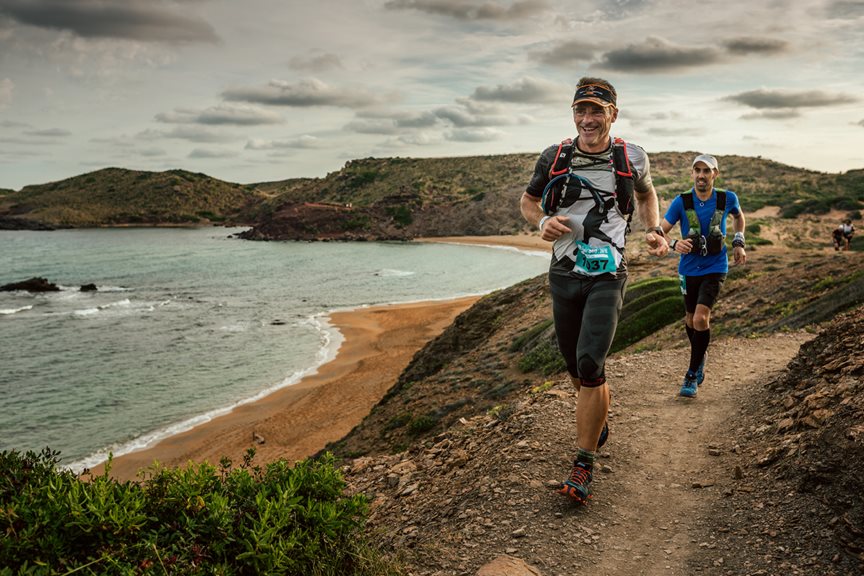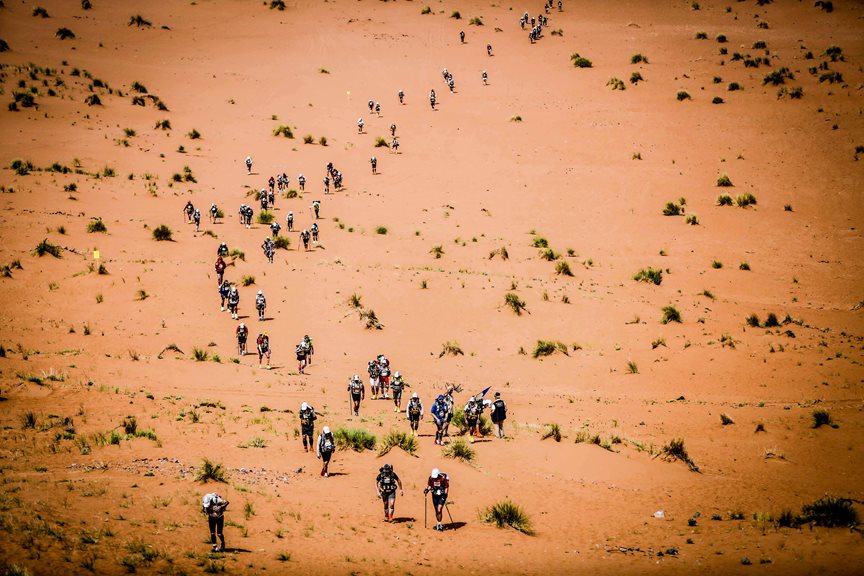Last updated: 02-Mar-16
By Olivier Kronal
I am Olivier Kronal, a runner with Type 1 Diabetes. I am 34 years old and live in Tienen in Belgium with my girlfriend, Kelly. I started running two years ago after watching Tom Waes, a Belgian TV star, running the Marathon des Sables. At that time, I had been living with type 1 diabetes for more than 3 years.
When I got diagnosed in 2009, I was a petty officer in the Belgian infantry. The diagnosis meant that opportunities in my job were suddenly limited. One major constraint, was that I was no longer allowed to go on missions abroad.
In 2010, I quit the army and started working with Securitas, where I still am. One of the advantages of the job is that due to the flexible working hours, it was possible to prepare myself for MDS 2015.
For the first few months, when I started running, I struggled a lot. For a normal person, blood glucose levels are always between safe margins. The body regulates itself by releasing insulin in the body at the correct rate, which transports the sugars to the muscles and organs. For diabetics, while running, blood glucose can drop to dangerous levels and can even result in a coma. So, as you can imagine, you have to be super-vigilant about your sugar intake. I learned to eat and drink while running which are key factors for any long distance runner but extra-complicated for me. It was a long road of trial and error. On some occasions my girlfriend had to come and pick me up somewhere because I had miscalculated the amount of sugar (gels and bars) for the distance and my blood sugar was plummeting dangerously low.
But something extraordinary happened while I was preparing for MDS 2015. To my surprise, I started to notice that, with practice, I could manage my sugar intake, and so I could actually control my disease.
I started running 10 km, then moved up to half marathon and marathon distance within 6 months. After one year, I was already doing trail runs of 65Km. As a member of the Belgian Desert Lions, I got a lot of help with MDS. Information on how to train as well as guidance on which equipment to use.
Olivier with the UZ Leuven team: Professor Mathieu, Professor Gillard and Saskia. Photo credit: Olivier Kronal.
I prepared myself for 18 months and had the support of a special team at UZ Leuven in Belgium. Professor Mathieu and Professor Gillard helped me with all my questions and concerns and supplied me with a continuous glucose monitor (CGM) to run with. This is a sensor that detects my blood sugar at all times, displaying it on a monitor. It meant that I knew when to take carbs and when to use insulin. During MDS, I ran without an insulin pump, so I had to do everything manually.
My training regime, then and now, is actually very simple. I do LSD (long, slow distance) training and also interval/fartlek training.
My eating regime is a little more complex: I try to eat healthily with a good variety of vegetables. Luckily my girlfriend helps me with this (I am not a great cook). When I have a race coming up, I carboload for several days beforehand. During the race, I use gels and bars to keep going. Of course, I always have to keep an eye on my sugar levels, but experience has taught me what I need to do.
Although Diabetes is a chronic disease, I have learned to live and train with it. I have never felt sorry for myself and I consider myself a normal athlete. It’s all in your head, you know. If you believe you can do it, you will do it.
MDS 2015. Photo credit: Olivier Kronal.
In April, I ran the Marathon des Sables and achieved a Top 100 ranking (99th place) of 1350 competitors.
The advice I want to give to diabetic runners is to listen to your own body and don’t try to rush things. Your body needs time to improve. If you can, find yourself a team of specialists who can help you achieve your goals.
Diabetes for me is not a handicap. I learned to control it and live with it. In fact, sport is very important for a diabetic because it can reverse a lot of the potential bad effects of the disease.
Finally, why do I run? I find peace in running. It’s my time to think about life and to relax.





